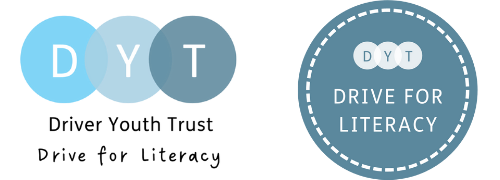New evidence shows teachers doubt dyslexia
11/10/2019
New evidence collected for Driver Youth Trust reveals a third of teachers have doubts about the validity of the term dyslexia. DYT’s CEO Chris Rossiter looks at what this means for learners struggling with the disorder.
The data, collected from nearly 6,000 teachers for Dyslexia Awareness Week [1], found that over a quarter of teachers (26%) believe that dyslexia is a useful term but have doubts about its validity. A further three per cent reported that dyslexia is not a useful or valid term. Doubts are greatest amongst headteachers, 33% of whom have doubts about its validity and nine per cent say that it is neither useful nor valid.
Data from the teacher poll also revealed that six per cent of teachers themselves have dyslexia. Neil Gilbride, a Lecturer in Education at the University of Gloucestershire, who is also dyslexic says having the condition “can make teachers more empathetic to the challenges their dyslexic learners can face”.
Dyslexia affects around 10% of the population but has been challenged by some academics who say the condition is unscientific and that the term lacks meaning. Unfortunately, this isn’t a new argument, and it isn’t a particularly helpful one either. Whilst academics are arguing about terminology, children’s literacy is at risk.
What causes dyslexia?
Dyslexia is most likely caused by an interaction between genetic and environmental factors, which affect the brain’s ability to perceive and process verbal and nonverbal information efficiently and accurately.
How does dyslexia manifest?
The key indicators of dyslexia are word retrieval difficulties; poor phonemic awareness; difficulties with word reading, especially under time constraints; and poor spelling.
Why do people think dyslexia doesn’t exist?
The Diagnostic and Statistical Manual of Mental Disorders (DSM–5) is a guide to diagnosing disorders for psychologists and contains hundreds of entries that cover all manner of disorders from depression to neurodevelopmental. Until recently this included reading disability, which is synonymous with dyslexia. However, this was recently changed to Specific Learning Disability, a much broader label that captures many neurodevelopmental conditions. This has caused some controversy, and some have argued, made the dyslexia label more, not less, opaque.
So, if dyslexia is a diagnosable disorder, why is its validity still up for debate?
There are multiple working definitions of dyslexia, at DYT we like the one proposed in the Rose Report (2009). However, defining dyslexia in different ways muddies the waters and cause confusion or debate that draws attention away from the children at risk, and how educators can best support them.
The existence of dyslexia cannot be denied
The understanding of dyslexia and its characteristics within education should be challenged, tested and modified, but the existence of dyslexia cannot be denied. Dyslexia is recognised in public policy and legislation; for example, in the SEND Code of Practice and the Equality Act (2010). Dyslexia’s existence is enshrined in clinical and administrative codes, which bestow rights and responsibilities for children, their families and schools.
Our new data shows that academic arguments are causing confusion in the classroom and children are the ones who will lose out. We believe the term ‘dyslexia’ is useful for identifying learners with significant and persistent difficulties in reading and spelling and for ensuring that required support and access arrangements are in place, whilst also recognising that dyslexia is not solely a difficulty in these areas.
Driver Youth Trust wants to ensure teachers, across all areas of the curriculum and all school phases, should know how to adjust their teaching for learners with literacy difficulties.
- Data was collected by Teacher Tapp on 30th September 2019. 5,775 teachers responded and the sample weighted to make it representative of the national population of teachers in England
